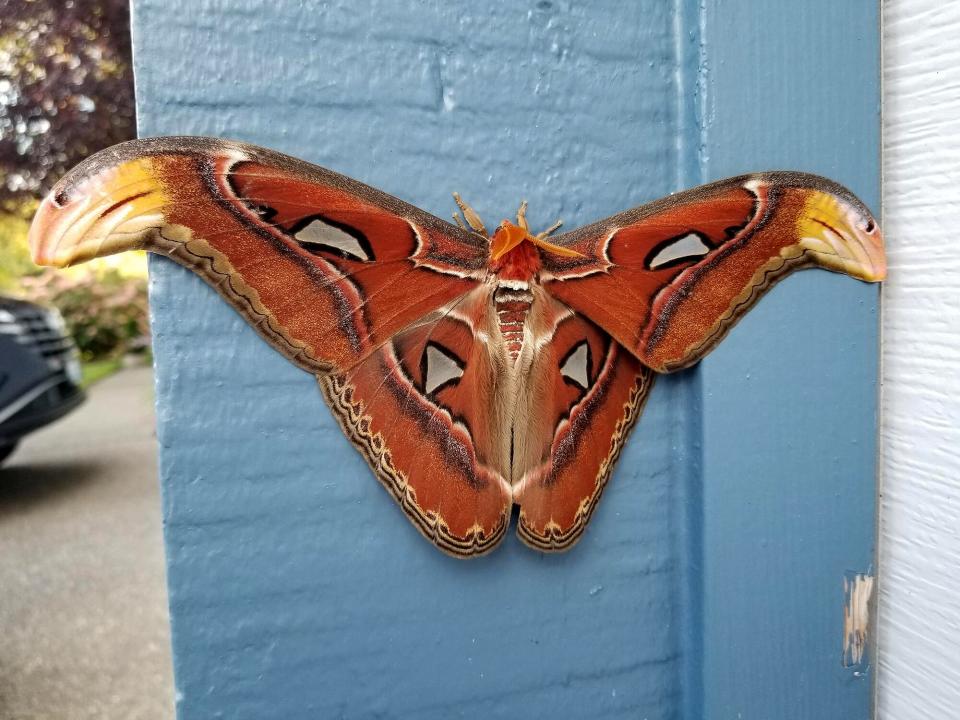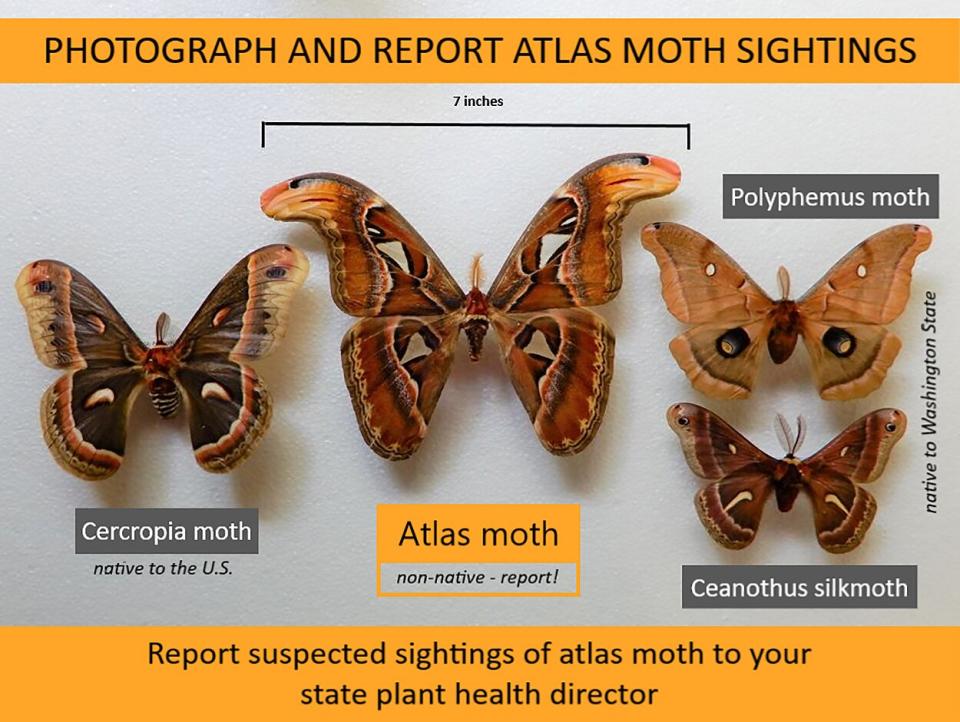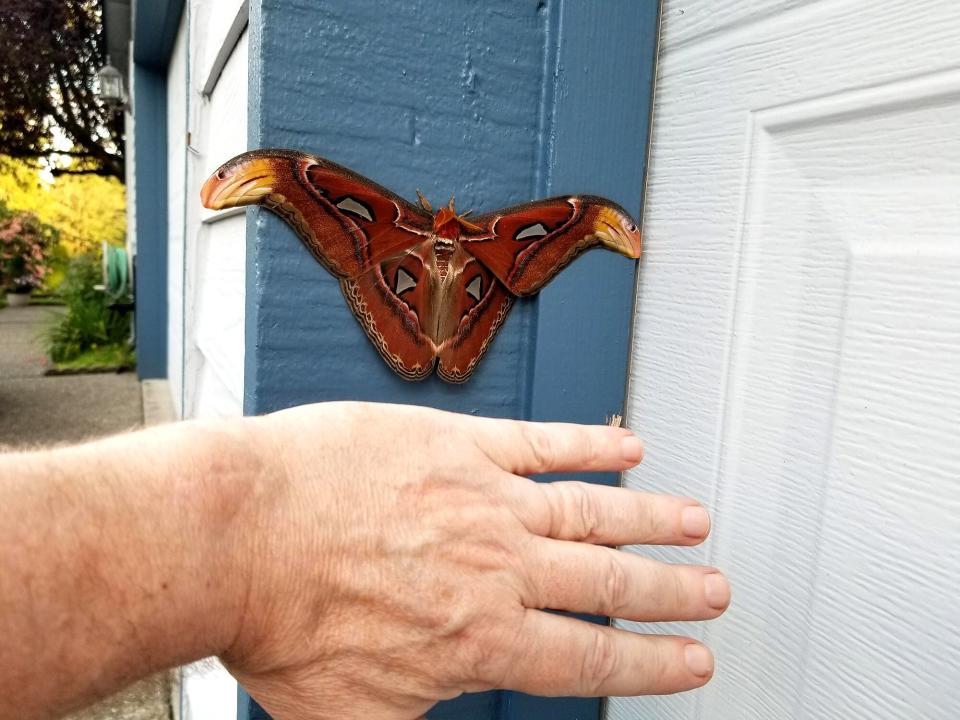Massive Moth with 10-inch Wingspan Spotted in Washington State: 'A Gee-Whiz Type of Insect'

The Washington State Department of Agriculture (WSDA) is asking the public to keep an eye out for massive moths after one was spotted in Bellevue, Washington, earlier this summer.
The insects, called atlas moths, are not native to the area.
Because there has been just one reported sighting — as of August 5 — there is no evidence yet that a population of atlas moths has been established in Washington, according to a report published by the WSDA.
According to the agency, the moths have a wingspan of up to 10 inches and are considered a "federally quarantine pest." It is against the law to "obtain, harbor, rear, or sell live atlas moths whether adults, eggs, larvae, or pupae without a permit from USDA."

Washington State Department of Agriculture Atlas moth
The spotting was initially reported on July 7 via a University of Washington professor to the WSDA. WSDA entomologists identified the insect as an atlas moth before sending it to the U.S. Department of Agriculture to confirm.
RELATED: Route the Capuchin Monkey Sparks Police Alert After Calling 911 From Cellphone
The agency confirmed the identity of the atlas moth, one of the largest moths in the world, on July 27, marking the first time they believe this species has been detected in the United States, according to the WSDA.

Washington State Department of Agriculture Atlas moth compared to native moths
"This is normally a tropical moth. We are not sure it could survive here," Sven Spichiger, WSDA managing entomologist, said per the report posted online. "USDA is gathering available scientific and technical information about this moth and will provide response recommendations, but in the meantime, we hope residents will help us learn if this was a one-off escapee or whether there might indeed be a population in the area."
The WSDA is asking the public to photograph and report any sightings of these moths. The agency clarifies that the insects do not pose a public health threat and are okay to handle.

Washington State Department of Agriculture Atlas moth compared to a man's hand
The agency shared a comparative photo showing the atlas moth alongside three other moths with similar coloring, though they are much smaller and native to the U.S.
RELATED: Scientists Are Exploring How to Bring the Tasmanian Tiger Back from Extinction
"This is a 'gee-whiz' type of insect because it is so large," Spichiger said. "Even if you aren't on the lookout for insects, this is the type that people get their phones out and take a picture of — they are that striking."
If any Washington state residents spot the insect, they should send a photo, along with the location of the sighting, to pestprogram@agr.wa.gov. If the sighting is in the U.S., but outside Washington, a photo and a note about the atlas moth's location should be sent to the State Plant Regulatory Official or State Plant Health Director in the state of the sighting.

 Yahoo Finance
Yahoo Finance 